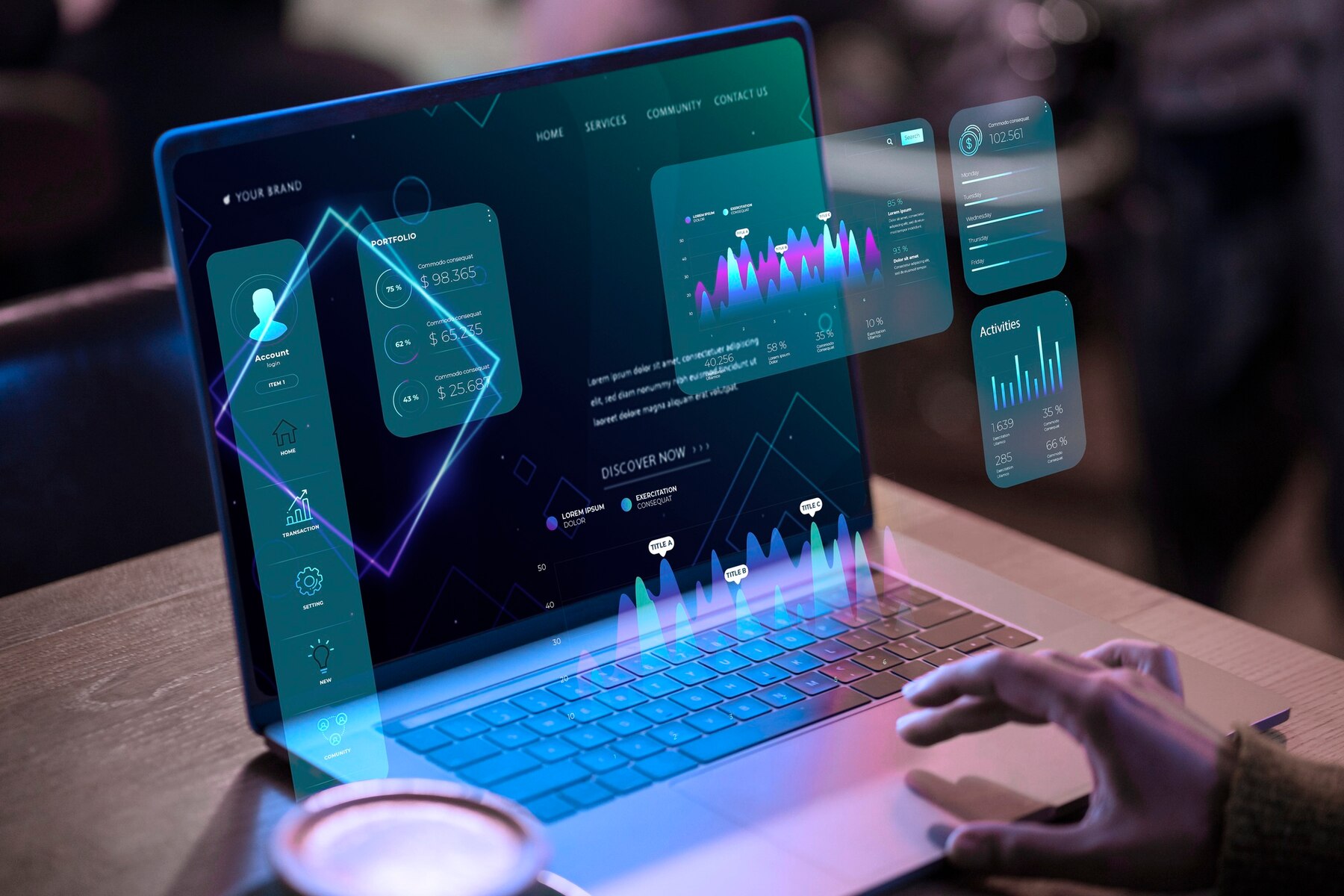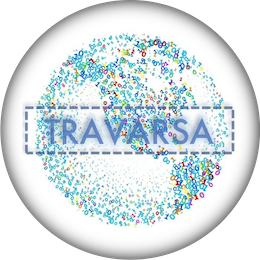Unlock the power of Marketing Automation with Machine Learning. Elevate your strategies, engage....
Read MoreUse of AI and ML in Advanced Marketing Strategies

In the dynamic realm of digital marketing, technological advancements are reshaping the landscape at an unprecedented pace. At the forefront of this transformative wave are Artificial Intelligence (AI) and Machine Learning (ML), ushering in a new era of precision, personalization, and unparalleled efficiency.
In this exploration, we delve into the profound impact of AI and ML on advanced digital marketing strategies, uncovering the myriad ways in which these technologies are revolutionizing the way businesses connect with their audiences.
Use of AI and ML in Advanced Marketing Strategies
As we navigate the intricate web of advanced digital marketing, the integration of AI and ML emerges as a game-changer. These technologies, once confined to the realm of science fiction, have seamlessly woven themselves into the fabric of our digital experiences. From predicting consumer behavior to optimizing content delivery, AI and ML empower marketers with tools that not only enhance efficiency but also unlock deeper insights into the ever-evolving preferences of the digital consumer.
Artificial Intelligence (AI) and Machine Learning (ML) have become integral components of digital marketing, enabling marketers to enhance efficiency, personalize experiences, and derive valuable insights. Here are ten strategies and use cases for AI and ML in digital marketing:
Predictive Analytics:
Predictive Analytics using Artificial Intelligence (AI) and Machine Learning (ML) in digital marketing involves the application of advanced algorithms to analyze vast datasets and predict future outcomes, trends, or user behaviors. AI and ML enhance the accuracy and efficiency of predictive modeling by automatically learning from data patterns and adapting to changing circumstances.
Usage in Digital Marketing:
Predictive Analytics with AI and ML finds diverse applications in digital marketing:
- Customer Behavior Prediction:
AI and ML algorithms analyze historical customer data to predict future behavior, enabling marketers to tailor strategies for personalized customer experiences. - Dynamic Pricing Optimization:
ML algorithms can analyze market conditions, competitor pricing, and customer behavior to dynamically adjust prices, maximizing revenue and competitiveness. - Lead Scoring and Qualification:
AI models can score leads based on historical data and user interactions, helping marketers prioritize and focus efforts on leads with a higher likelihood of conversion. - Churn Prevention:
Predictive analytics using AI and ML helps identify potential churners by analyzing patterns in user behavior, allowing marketers to implement targeted retention strategies. - Content Personalization:
AI-driven predictive analytics helps in real-time content personalization, delivering the most relevant content to users based on their preferences and behavior. - Ad Targeting and Optimization:
ML algorithms optimize ad targeting by analyzing user behavior, demographics, and contextual data to serve personalized and relevant ads, improving ad performance.
Tools:
Several tools and platforms integrate AI and ML for predictive analytics in digital marketing. Some notable tools include:
- TensorFlow:
An open-source machine learning framework developed by Google that can be used for predictive modeling and analysis. - Scikit-learn:
A simple and efficient tool for data analysis and modeling in Python, suitable for various machine learning tasks. - IBM Watson Marketing:
Offers AI-powered predictive analytics tools for marketing, including customer segmentation, lead scoring, and churn prediction. - Microsoft Azure Machine Learning:
A cloud-based service that provides tools for building, deploying, and managing predictive models, integrating seamlessly with other Azure services. - Google Cloud AI Platform:
A cloud-based platform that allows developers and data scientists to build and deploy machine learning models at scale.
Benefits:
Predictive Analytics with AI and ML in digital marketing provides numerous advantages:
- Increased Accuracy:
AI and ML enhance the accuracy of predictions by automatically learning from patterns in large datasets. - Real-time Personalization:
Enables real-time personalization of content, ads, and user experiences based on dynamic changes in user behavior. - Automated Decision Making:
AI-driven predictive models automate decision-making processes, allowing marketers to respond quickly to changing market conditions. - Efficient Resource Allocation:
Helps marketers allocate resources more efficiently by focusing on strategies and channels with the highest predicted ROI. - Continuous Learning:
ML models continuously learn from new data, adapting to evolving market trends and user behaviors. - Strategic Insights:
Provides actionable insights derived from complex data patterns, supporting data-driven and strategic decision-making.
In summary, predictive analytics using AI and ML in digital marketing leverages advanced algorithms to enhance accuracy, efficiency, and real-time personalization, allowing marketers to make more informed decisions and optimize their strategies.
Customer Segmentation:
Customer Segmentation using Artificial Intelligence (AI) and Machine Learning (ML) in digital marketing involves the use of advanced algorithms to analyze large datasets and automatically categorize customers into distinct segments based on shared characteristics, behaviors, or preferences. This segmentation allows marketers to tailor their strategies, messages, and offerings to specific groups, improving the effectiveness of marketing campaigns.
Usage in Digital Marketing:
Customer Segmentation with AI and ML has several applications in digital marketing:
- Personalized Marketing Campaigns:
AI and ML algorithms can identify patterns in customer data to create more refined segments, enabling marketers to personalize campaigns based on the unique preferences and behaviors of each group. - Targeted Content Delivery:
Segmentation allows for the targeted delivery of content, ensuring that messages resonate with specific customer segments, leading to increased engagement and conversion rates. - Product Recommendations:
By understanding the preferences of different segments, AI-driven segmentation helps in providing personalized product or content recommendations to enhance the customer experience. - Dynamic Pricing Strategies:
AI algorithms can segment customers based on price sensitivity and purchasing behavior, enabling the implementation of dynamic pricing strategies for different segments. - Customer Retention:
Segmentation aids in identifying at-risk segments, allowing marketers to implement targeted retention strategies and prevent customer churn.
Tools:
Several tools and platforms integrate AI and ML for customer segmentation in digital marketing. Some notable tools include:
- IBM Watson Customer Experience Analytics:
Offers AI-powered customer analytics tools that can segment users based on behavior, preferences, and interactions. - Google Cloud AI Platform:
Provides tools for building and deploying machine learning models, including those for customer segmentation. - Adobe Marketing Cloud:
Integrates AI capabilities for customer segmentation and personalized marketing strategies. - Segment:
While not strictly an AI tool, Segment is a customer data platform that can be integrated with various AI tools for better customer segmentation. - Microsoft Azure Machine Learning:
Offers machine learning tools that can be utilized for customer segmentation tasks.
Benefits:
Customer Segmentation using AI and ML in digital marketing provides numerous advantages:
- Improved Targeting:
AI-driven segmentation enhances the precision of targeting, ensuring that marketing messages reach the most relevant audience. - Personalized Customer Experience:
Enables the delivery of personalized experiences, content, and recommendations tailored to the unique preferences of each customer segment. - Increased Engagement:
Targeted marketing campaigns and personalized content result in higher engagement rates as customers receive content that aligns with their interests. - Optimized Resource Allocation:
Helps marketers allocate resources more efficiently by focusing efforts on segments with higher conversion potential. - Better Retention Strategies:
Identifies segments at risk of churn, allowing for the implementation of targeted retention efforts and loyalty programs. - Enhanced Customer Satisfaction:
Personalized experiences and tailored offerings contribute to improved customer satisfaction, fostering loyalty and positive brand perception.
In summary, Customer Segmentation with AI and ML in digital marketing leverages advanced algorithms to categorize customers into segments based on shared characteristics, enabling marketers to deliver more targeted and personalized campaigns for improved engagement and conversion.
Chatbots and Conversational AI:
Chatbots and Conversational AI in digital marketing involve the use of artificial intelligence (AI) and machine learning (ML) technologies to create interactive and automated chat interfaces. These chatbots can engage in natural language conversations with users, providing information, answering queries, and even assisting with transactions.
Usage in Digital Marketing:
Chatbots and Conversational AI have various applications in digital marketing:
- Customer Support:
Chatbots can provide instant customer support by answering frequently asked questions, troubleshooting issues, and guiding users through common problems. - Lead Generation:
Conversational AI can be used to engage website visitors, qualify leads, and collect information for follow-up by sales teams. - E-commerce Assistance:
Chatbots can assist users in finding products, provide product recommendations, and facilitate the checkout process, enhancing the overall e-commerce experience. - Content Delivery:
Chatbots can deliver personalized content, updates, and recommendations based on user preferences and behavior, contributing to content marketing strategies. - Appointment Scheduling:
Conversational AI can handle appointment scheduling, reservation bookings, and other time-sensitive interactions, streamlining processes for businesses.
Tools:
Several tools and platforms incorporate AI and ML for creating chatbots and implementing Conversational AI in digital marketing. Some popular tools include:
- Dialogflow (by Google):
Allows developers to create natural language understanding for chatbots, enabling them to understand and respond to user queries. - Microsoft Bot Framework:
A comprehensive framework for building chatbots that can be integrated with various channels and platforms. - IBM Watson Assistant:
Offers AI-powered chatbot capabilities with natural language understanding, enabling the creation of conversational interfaces. - Chatfuel:
A platform that allows users to create chatbots for Facebook Messenger without coding, suitable for businesses looking to leverage social media. - Rasa:
An open-source platform for building conversational AI, offering advanced customization and control over the chatbot’s behavior.
Benefits:
Chatbots and Conversational AI in digital marketing provide several benefits:
- 24/7 Availability:
Chatbots can provide round-the-clock customer support and assistance, improving accessibility for users in different time zones. - Cost Efficiency:
Automating routine and repetitive tasks through chatbots reduces the need for human intervention, leading to cost savings for businesses. - Improved User Engagement:
Conversational interfaces enhance user engagement by providing a more interactive and personalized experience. - Lead Qualification:
Chatbots can interact with users, ask qualifying questions, and gather information to identify potential leads for sales teams. - Instant Responses:
Users receive immediate responses to their queries, enhancing customer satisfaction and preventing delays in communication. - Data Collection and Insights:
Chatbots can collect valuable data on user preferences, behaviors, and common issues, providing insights that can inform marketing strategies. - Scalability:
Chatbots can handle a large number of interactions simultaneously, ensuring scalability as the user base grows.
In summary, Chatbots and Conversational AI leverage AI and ML technologies to create interactive and automated chat interfaces, enhancing customer support, lead generation, and user engagement in digital marketing.
Recommendation Engines:
Recommendation Engines using Artificial Intelligence (AI) and Machine Learning (ML) in digital marketing involve the implementation of algorithms that analyze user behavior, preferences, and historical data to provide personalized recommendations. These engines are employed to suggest products, content, or services to users with the aim of enhancing the overall user experience and increasing engagement.
Usage in Digital Marketing:
Recommendation Engines with AI and ML have diverse applications in digital marketing:
- E-commerce Product Recommendations:
Recommendation engines analyze user purchase history, browsing behavior, and preferences to suggest relevant products, increasing the likelihood of conversions and cross-selling. - Content Recommendations:
In media and content platforms, recommendation engines suggest articles, videos, or other content based on user preferences, improving engagement and user satisfaction. - Music and Video Streaming:
Platforms like Spotify and Netflix leverage recommendation engines to suggest music, movies, or TV shows based on a user’s listening or viewing history. - Personalized Email Campaigns:
In email marketing, recommendation engines can tailor content and product offerings in emails based on a user’s past interactions, leading to more personalized and relevant communication. - Travel and Accommodation Recommendations:
In the travel industry, recommendation engines analyze user preferences and behavior to suggest personalized travel destinations, hotels, or activities.
Tools:
Several tools and platforms incorporate AI and ML for building recommendation engines in digital marketing. Some widely used tools include:
- Apache Mahout:
An open-source machine learning library that includes collaborative filtering algorithms suitable for building recommendation systems. - TensorFlow Recommenders:
A library built on TensorFlow that provides tools and components for building recommendation models. - Amazon Personalize:
A fully managed service from Amazon Web Services (AWS) that makes it easy to build recommendation engines without requiring deep machine learning expertise. - Google Cloud AI Platform Recommendations:
A cloud-based service that enables the development and deployment of recommendation models using Google Cloud. - Microsoft Azure Personalizer:
Part of the Azure Cognitive Services, Personalizer is a service that provides recommendations based on user behavior.
Benefits:
Recommendation Engines using AI and ML in digital marketing provide several advantages:
- Increased Engagement:
Personalized recommendations enhance user engagement by offering content or products tailored to individual preferences. - Higher Conversion Rates:
Targeted product recommendations increase the likelihood of conversions by presenting users with items they are more likely to be interested in purchasing. - Customer Retention:
Recommender systems contribute to customer retention by providing a continuously improving and personalized user experience. - Cross-selling and Upselling:
By suggesting related or complementary products, recommendation engines facilitate cross-selling and upselling opportunities. - Enhanced User Experience:
Users benefit from a more enjoyable and efficient experience as they discover relevant content or products more easily. - Data-Driven Marketing:
Recommendation engines generate valuable data on user preferences and behaviors, enabling marketers to make data-driven decisions and refine their strategies. - Time and Resource Efficiency:
Automated recommendations save time for users in search of relevant content or products, making the user journey more efficient.
In summary, Recommendation Engines with AI and ML in digital marketing leverage algorithms to analyze user data and provide personalized suggestions, improving engagement, conversion rates, and overall user experience.
Dynamic Pricing Optimization:
Dynamic Pricing Optimization using Artificial Intelligence (AI) and Machine Learning (ML) in digital marketing involves the use of advanced algorithms to analyze real-time market conditions, competitor pricing, and customer behavior. The goal is to dynamically adjust pricing strategies for products or services based on various factors to maximize revenue and competitiveness.
Usage in Digital Marketing:
Dynamic Pricing Optimization with AI and ML has several applications in digital marketing:
- Real-Time Price Adjustments:
Algorithms continuously analyze market data and adjust product prices in real-time based on factors such as demand, competition, and seasonality. - Competitor Price Monitoring:
AI and ML algorithms can monitor and analyze competitor pricing, allowing businesses to react quickly to changes in the competitive landscape. - Personalized Pricing:
Dynamic pricing models can take into account individual customer behavior and characteristics to offer personalized pricing, optimizing for each customer segment. - Demand-Based Pricing:
By analyzing historical data and current demand trends, dynamic pricing models can adjust prices to reflect changes in demand for specific products or services. - Flash Sales and Promotions:
AI-driven dynamic pricing can be used to implement flash sales and time-limited promotions to capitalize on peak demand periods.
Tools:
Several tools and platforms incorporate AI and ML for implementing Dynamic Pricing Optimization in digital marketing. Some notable tools include:
- Wiser Solutions:
Provides dynamic pricing solutions that leverage machine learning to optimize pricing strategies for retailers. - Pricing Intelligence Tools:
Platforms like Prisync, Competera, and Price2Spy offer pricing intelligence tools that use AI and ML to monitor competitor prices and optimize dynamic pricing strategies. - Zilliant:
Offers AI-powered pricing optimization solutions for B2B and B2C businesses, helping them maximize profitability through intelligent pricing strategies. - Revionics (now part of Aptos):
A retail pricing optimization platform that uses AI to analyze market data, consumer behavior, and competitive pricing to optimize prices. - Incompetitor by PriceSpider:
A pricing intelligence tool that uses AI to gather and analyze competitor pricing data, helping businesses optimize their pricing strategies.
Benefits:
Dynamic Pricing Optimization with AI and ML in digital marketing provides several benefits:
- Maximized Revenue:
AI-driven dynamic pricing adjusts prices based on real-time market conditions, helping businesses maximize revenue by optimizing prices for demand and competition. - Competitive Advantage:
By monitoring and reacting to competitor pricing in real-time, businesses can maintain a competitive edge in the market. - Improved Profitability:
Dynamic pricing models consider various factors to set optimal prices, contributing to improved profitability by balancing demand and pricing strategies. - Personalization:
AI allows for personalized pricing strategies, tailoring prices based on individual customer behavior and preferences. - Adaptability to Market Changes:
Dynamic pricing models are adaptable to changes in market conditions, allowing businesses to respond quickly to shifts in demand, supply, or competitive pricing. - Efficient Inventory Management:
By aligning pricing with demand, dynamic pricing optimization helps in more efficient inventory management, reducing the risk of overstock or stockouts. - Strategic Promotions:
Businesses can strategically use dynamic pricing for promotions and flash sales to drive customer engagement and increase sales during specific periods.
In summary, Dynamic Pricing Optimization using AI and ML in digital marketing involves leveraging algorithms to adjust product prices in real-time based on market conditions, competition, and customer behavior. This approach aims to maximize revenue, maintain a competitive edge, and enhance overall profitability.
Image and Video Recognition:
Image and Video Recognition using Artificial Intelligence (AI) and Machine Learning (ML) in digital marketing involves the application of algorithms to analyze and interpret visual content, such as images and videos. These technologies enable computers to identify objects, scenes, and even emotions within visual media, providing valuable insights for marketers.
Usage in Digital Marketing:
Image and Video Recognition with AI and ML have various applications in digital marketing:
- Visual Search:
Users can search for products online by uploading images, and AI algorithms can recognize and match those images with relevant products. - Brand Monitoring:
Image and video recognition tools can monitor and analyze social media platforms and other online channels to identify and track brand mentions, logos, and visual content associated with a brand. - Content Tagging and Categorization:
AI algorithms can automatically tag and categorize images and videos based on their content, making it easier for marketers to organize and manage visual assets. - User-Generated Content (UGC) Analysis:
Image and video recognition tools can analyze user-generated content to identify and curate content that aligns with a brand, allowing marketers to leverage UGC in their campaigns. - Ad Content Analysis:
Marketers can use image and video recognition to analyze the performance of ad creatives by understanding how users engage with visual content.
Tools:
Several tools and platforms incorporate AI and ML for Image and Video Recognition in digital marketing. Some notable tools include:
- Google Cloud Vision API:
Allows developers to integrate image and video recognition capabilities into applications, including content analysis and object detection. - Amazon Rekognition:
A cloud-based service that provides image and video analysis, including facial recognition, object detection, and content moderation. - Clarifai:
Offers a visual recognition platform that uses deep learning to analyze and categorize images and videos. - IBM Watson Visual Recognition:
Provides image and video analysis tools, including facial recognition, content tagging, and object detection. - Microsoft Azure Computer Vision:
A cloud service that offers image and video analysis capabilities, including image tagging, object detection, and optical character recognition (OCR).
Benefits:
Image and Video Recognition using AI and ML in digital marketing provide several benefits:
- Enhanced Visual Search:
Allows users to search for products visually, improving the search experience and increasing the likelihood of finding relevant products. - Brand Monitoring and Reputation Management:
Enables businesses to monitor and manage their brand presence by tracking visual content associated with the brand across various online platforms. - Efficient Content Management:
Automates the tagging and categorization of visual content, making it easier for marketers to organize and search for images and videos. - Insights from User-Generated Content:
Analyzes user-generated content to identify trends, sentiments, and valuable content that can be leveraged in marketing campaigns. - Ad Performance Optimization:
Helps marketers understand how users interact with visual content in ads, allowing for the optimization of ad creatives for better engagement and conversion rates. - Content Moderation:
Provides tools for automatically moderating and filtering visual content to ensure it aligns with brand guidelines and regulatory standards. - Facial Recognition for Personalization:
Enables personalized experiences by recognizing faces and emotions, allowing marketers to tailor content based on user reactions.
In summary, Image and Video Recognition using AI and ML in digital marketing involve leveraging algorithms to analyze and interpret visual content, providing valuable insights for brand monitoring, content management, and ad performance optimization.
Content Creation and Optimization:
Content Creation and Optimization using Artificial Intelligence (AI) and Machine Learning (ML) in digital marketing involve the use of advanced algorithms to generate, enhance, and optimize written and visual content. These technologies leverage natural language processing (NLP) and other techniques to create high-quality, personalized, and engaging content for digital marketing campaigns.
Usage in Digital Marketing:
Content Creation and Optimization with AI and ML have various applications in digital marketing:
- Automated Content Generation:
AI algorithms can generate written content, including blog posts, articles, and product descriptions, based on specified topics and styles. - Personalized Content Recommendations:
ML models analyze user behavior and preferences to recommend personalized content, such as product recommendations, articles, or videos. - SEO Optimization:
AI tools can assist in optimizing content for search engines by analyzing keywords, suggesting improvements, and ensuring content meets SEO best practices. - Visual Content Enhancement:
AI and ML algorithms can enhance visual content, including images and videos, by optimizing quality, adding effects, and improving overall aesthetics. - A/B Testing and Optimization:
ML models can analyze the performance of different content variations in A/B tests, helping marketers optimize for better engagement, conversion rates, and other key metrics.
Tools:
Several tools and platforms incorporate AI and ML for Content Creation and Optimization in digital marketing. Some notable tools include:
- OpenAI GPT (Generative Pre-trained Transformer):
A powerful language model that can be used for content generation and enhancement, capable of understanding and generating human-like text. - HubSpot Content Strategy Tool:
HubSpot integrates AI to provide content recommendations, topic suggestions, and SEO optimization insights to improve the overall content strategy. - Grammarly:
An AI-powered writing assistant that helps improve grammar, style, and tone in written content, enhancing overall quality. - Ahrefs:
Offers AI-driven tools for SEO analysis, content optimization, and keyword research to improve the visibility of digital content. - Canva:
While not strictly an AI tool, Canva integrates machine learning for design suggestions, image enhancement, and layout recommendations, enhancing visual content creation.
Benefits:
Content Creation and Optimization using AI and ML in digital marketing provide several benefits:
- Efficient Content Creation:
AI-driven tools automate content creation processes, saving time and resources for marketers. - Personalization:
ML algorithms analyze user data to deliver personalized content recommendations, improving user engagement and satisfaction. - SEO Improvement:
AI tools assist in optimizing content for search engines, increasing the likelihood of content appearing in relevant search results. - Consistent Tone and Style:
AI-powered writing assistants ensure a consistent tone and style across content, maintaining brand identity and professionalism. - Enhanced Visual Content:
AI algorithms improve the quality of visual content, making it more visually appealing and impactful. - Data-Driven Decision Making:
Analytics provided by AI tools offer insights into content performance, allowing marketers to make data-driven decisions for content optimization. - Increased Engagement:
Well-optimized and personalized content leads to higher engagement levels, keeping audiences interested and involved. - Improved Conversion Rates:
Optimized content, personalized recommendations, and A/B testing contribute to improved conversion rates and overall campaign effectiveness.
In summary, Content Creation and Optimization with AI and ML in digital marketing involve leveraging advanced algorithms to automate content generation, enhance visual content, and optimize written material for better performance and engagement. These technologies play a crucial role in streamlining content processes and improving the effectiveness of digital marketing efforts.
Fraud Detection and Prevention:
Fraud Detection and Prevention using Artificial Intelligence (AI) and Machine Learning (ML) in digital marketing refer to the application of advanced algorithms to analyze patterns, anomalies, and user behavior in order to detect and prevent fraudulent activities. These technologies help identify and mitigate various types of fraud, such as click fraud, fake account creation, and payment fraud, to protect digital marketing campaigns and transactions.
Usage in Digital Marketing:
Fraud Detection and Prevention with AI and ML have several applications in digital marketing:
- Click Fraud Detection:
AI algorithms analyze click patterns to identify and prevent fraudulent clicks on online advertisements, ensuring accurate reporting and budget optimization. - Ad Fraud Prevention:
ML models examine user behavior, engagement patterns, and other metrics to detect and prevent various forms of ad fraud, such as impression fraud and click injection. - Bot Detection:
AI is used to distinguish between human and bot traffic, helping prevent fraudulent activities such as fake account creation, comment spamming, and unauthorized data scraping. - Transaction Fraud Prevention:
ML algorithms analyze transaction data to detect unusual patterns or anomalies, helping prevent fraudulent transactions in e-commerce and other online transactions. - Account Takeover Detection:
AI and ML can identify abnormal user behavior and login patterns to detect and prevent unauthorized access and account takeovers.
Tools:
Several tools and platforms incorporate AI and ML for Fraud Detection and Prevention in digital marketing. Some notable tools include:
- Sift Science:
Offers a fraud detection and prevention platform that utilizes machine learning to analyze user behavior and detect fraudulent activities. - Kount:
A fraud prevention platform that uses AI and machine learning to analyze transactions and user behavior for detecting and preventing fraud. - Shape Security (Part of F5 Networks):
Provides a comprehensive bot mitigation solution using AI to distinguish between human and automated bot traffic, preventing fraudulent activities. - Riskified:
A fraud prevention platform that uses machine learning to assess the risk associated with transactions and prevent fraudulent activities in e-commerce. - DataVisor:
A fraud detection platform that utilizes unsupervised machine learning to identify and prevent various forms of online fraud.
Benefits:
Fraud Detection and Prevention using AI and ML in digital marketing provide several benefits:
- Accuracy and Efficiency:
AI algorithms offer high accuracy in detecting fraudulent activities, reducing false positives and improving the efficiency of fraud prevention. - Real-Time Detection:
ML models can detect fraud in real-time, allowing for immediate action to prevent further fraudulent activities. - Ad Spend Protection:
Click fraud and ad fraud detection help protect advertisers from wasting budgets on non-genuine clicks and impressions. - Enhanced Security:
ML-powered fraud prevention enhances the overall security of digital marketing campaigns, preventing unauthorized access and protecting user data. - User Trust:
By preventing fraudulent activities, businesses can build and maintain trust with their users, ensuring a positive user experience. - Cost Savings:
Prevention of fraud leads to cost savings by avoiding financial losses associated with fraudulent transactions and activities. - Regulatory Compliance:
Implementing robust fraud detection aligns with regulatory requirements and data protection standards, ensuring legal compliance. - Brand Reputation Protection:
Fraud prevention safeguards the reputation of businesses by preventing fraudulent activities that could harm brand image and trust.
In summary, Fraud Detection and Prevention using AI and ML in digital marketing involve leveraging advanced algorithms to identify and mitigate fraudulent activities. These technologies contribute to enhanced security, cost savings, and improved trust between businesses and their users.
Attribution Modeling:
Attribution Modeling using Artificial Intelligence (AI) and Machine Learning (ML) in digital marketing involves the use of advanced algorithms to analyze and attribute the value of various touchpoints in a customer’s journey. The goal is to understand and assign credit to different marketing channels, interactions, or campaigns that contribute to conversions or other desired outcomes, providing insights for optimizing marketing strategies.
Usage in Digital Marketing:
Attribution Modeling with AI and ML has several applications in digital marketing:
- Multi-Touchpoint Attribution:
AI and ML algorithms analyze customer journeys across multiple touchpoints, considering the entire conversion path to attribute value to various marketing channels and interactions. - Conversion Path Analysis:
ML models examine the sequences of interactions that lead to conversions, helping marketers understand the most effective paths and touchpoints in the customer journey. - Algorithmic Attribution:
AI-driven attribution models use machine learning to automatically assign weights to different touchpoints based on their contribution to conversions, considering factors like recency and frequency. - Predictive Attribution:
ML algorithms can predict the likely impact of future marketing activities on conversions, enabling marketers to optimize their strategies proactively. - Cross-Channel Attribution:
Attribution modeling considers the contributions of various marketing channels, including online and offline channels, to provide a holistic view of the customer journey.
Tools:
Several tools and platforms incorporate AI and ML for Attribution Modeling in digital marketing. Some notable tools include:
- Google Attribution:
Part of the Google Marketing Platform, Google Attribution uses machine learning to analyze and attribute conversion credit across different touchpoints. - Adobe Analytics:
Adobe offers attribution modeling capabilities within its analytics platform, leveraging machine learning for advanced insights into customer journeys. - Attribution (by Impact):
Provides AI-driven attribution modeling that helps marketers understand the impact of their marketing channels on conversions. - Convertro (by Zeta Global):
An attribution platform that uses machine learning to analyze and attribute the value of various marketing touchpoints in the customer journey. - Kochava:
Offers an attribution platform with machine learning capabilities for analyzing and attributing the impact of marketing activities on conversions.
Benefits:
Attribution Modeling using AI and ML in digital marketing provides several benefits:
- Holistic Understanding:
AI-driven attribution models provide a more comprehensive and holistic understanding of the customer journey, considering all touchpoints and interactions. - Optimized Marketing Budgets:
By understanding the contribution of each marketing channel, businesses can optimize their marketing budgets more effectively, allocating resources to high-impact channels. - Improved Decision-Making:
ML algorithms provide actionable insights, helping marketers make informed decisions about their strategies, campaigns, and channel investments. - Proactive Optimization:
Predictive attribution models enable marketers to proactively optimize their strategies based on predicted outcomes, improving efficiency and effectiveness. - Enhanced Personalization:
Attribution modeling allows businesses to understand the customer journey, enabling personalized and targeted marketing messages at each stage of the funnel. - Increased ROI:
By accurately attributing value to marketing touchpoints, businesses can focus on strategies and channels that provide the highest return on investment (ROI). - Data-Driven Insights:
AI and ML provide data-driven insights into customer behavior, helping marketers understand the most influential factors in the conversion process. - Cross-Channel Optimization:
Attribution modeling considers the impact of various marketing channels, facilitating cross-channel optimization for a more integrated and effective marketing strategy.
In summary, Attribution Modeling using AI and ML in digital marketing involves leveraging advanced algorithms to analyze and attribute the value of different touchpoints in the customer journey. These technologies contribute to a more nuanced understanding of marketing effectiveness, enabling businesses to optimize strategies and improve overall marketing performance.
Sentiment Analysis:
Sentiment Analysis, also known as opinion mining, is a natural language processing (NLP) technique that involves using artificial intelligence (AI) and machine learning (ML) algorithms to analyze and determine the sentiment or emotion expressed in textual data. This data can include customer reviews, social media comments, product feedback, and other forms of user-generated content. The goal of sentiment analysis is to understand whether the expressed sentiment is positive, negative, or neutral, providing valuable insights for businesses in various domains, including digital marketing.
Usage in Digital Marketing:
Sentiment Analysis using AI & ML has several applications in digital marketing:
- Brand Monitoring:
Businesses can use sentiment analysis to monitor and analyze mentions of their brand on social media, review platforms, and other online channels. This helps in understanding the overall sentiment towards the brand. - Product and Service Feedback:
Analyzing customer reviews and feedback through sentiment analysis allows businesses to gain insights into customer satisfaction levels, identify areas for improvement, and make data-driven decisions to enhance products and services. - Social Media Monitoring:
Digital marketers can employ sentiment analysis to monitor social media conversations and understand how users feel about specific products, campaigns, or industry trends. This information helps in shaping social media strategies. - Campaign Evaluation:
Sentiment analysis helps assess the success and impact of marketing campaigns by gauging the sentiment expressed in user comments and reactions. Marketers can then optimize campaigns based on the feedback received. - Competitor Analysis:
Businesses can use sentiment analysis to monitor the sentiment surrounding their competitors. This provides insights into areas where competitors excel and areas where they may face challenges. - Customer Support and Feedback:
Sentiment analysis is valuable in customer support by automatically categorizing incoming messages or feedback as positive, negative, or neutral. This enables businesses to prioritize and address customer concerns effectively. - Content Strategy Optimization:
Marketers can use sentiment analysis to understand how audiences respond to different types of content. By analyzing sentiment, they can tailor content strategies to align with audience preferences.
Tools:
Several tools and platforms incorporate AI and ML for Sentiment Analysis in digital marketing. Some notable tools include:
- MonkeyLearn:
Provides a user-friendly platform for building custom sentiment analysis models and extracting insights from text data. - IBM Watson Natural Language Understanding:
IBM’s NLP service includes sentiment analysis features, allowing businesses to analyze and understand sentiments in textual content. - Google Cloud Natural Language API:
Offers sentiment analysis capabilities, providing sentiment scores for text analysis, including content from social media, reviews, and more. - Microsoft Azure Text Analytics:
Azure’s Text Analytics service includes sentiment analysis, allowing businesses to gain insights into the sentiment expressed in their textual data. - Amazon Comprehend:
Amazon Comprehend is an AWS service that provides sentiment analysis, helping businesses analyze customer sentiment in various applications. - Hootsuite:
A social media management platform that incorporates sentiment analysis features for monitoring and analyzing brand sentiment on social media.
Benefits:
Sentiment Analysis using AI & ML in digital marketing provides several benefits:
- Customer Insights:
Businesses gain valuable insights into customer sentiments, preferences, and opinions, helping them make informed decisions. - Reputation Management:
Enables businesses to monitor and manage their online reputation by understanding how customers perceive their brand. - Proactive Issue Resolution:
Identifies potential issues or concerns raised by customers, allowing businesses to address them proactively and improve customer satisfaction. - Campaign Effectiveness:
Helps in evaluating the effectiveness of marketing campaigns by analyzing the sentiment expressed in user reactions and comments. - Targeted Marketing:
Enables personalized and targeted marketing strategies by understanding the sentiment and preferences of the target audience. - Competitor Analysis:
Provides insights into the sentiments surrounding competitors, allowing businesses to identify competitive advantages or areas for improvement. - Enhanced Customer Engagement:
Allows businesses to engage with customers more effectively by understanding and responding to their sentiments in real-time.
In summary, Sentiment Analysis using AI & ML in digital marketing involves leveraging advanced algorithms to analyze and interpret the sentiment expressed in textual data. This analysis provides valuable insights for businesses to make data-driven decisions, improve customer satisfaction, and optimize marketing strategies.
In conclusion, the fusion of AI and ML with advanced digital marketing not only represents a technological evolution but a paradigm shift in how businesses craft and execute their online strategies. As we embrace the power of algorithms, predictive analytics, and automation, we recognize the transformative potential these technologies hold for the future of marketing. The journey doesn’t end here; it unfolds as a continuous exploration into the possibilities that AI and ML unlock, propelling digital marketers toward a horizon where innovation knows no bounds. Together, let’s navigate this landscape of endless opportunities and redefine the future of digital marketing.
Mastering Micro-Moments Marketing Strategy for Modern Marketers
Unlock the power of Micro-Moments Strategy. Learn how businesses can engage consumers at....
Read MoreUnveiling the Power of Dark Social: Dark Social Campaigns
Unlock the power of Dark Social Campaigns! Explore the benefits of private sharing....
Read MoreUnderstanding Web Servers and Types of Web Servers
Explore the top 10 web servers, from Apache's reliability to Node.js's innovation. Discover....
Read MoreTop 10 Cyber Security Threats Prevention strategies and solutions
Arm yourself with insights! Explore top 10 cyber threats and fortify your digital....
Read MoreHow to start your career in App Development ?
Unlock the path to a thriving app development career with our guide. From....
Read MoreIntroduction to Frontend Web Development
Discover the art of Frontend Web Development – from building captivating user interfaces....
Read MoreHow to start your career in Digital Marketing ?
Launch your Digital Marketing Executive career with our guide. From fundamentals to certifications,....
Read MoreAll About Keywords !
Unlock SEO success with diverse keywords. From short-tail to industry-specific, our guide empowers....
Read MoreHow to prepare for a job interview?
Prepare for success with our expert guide on how to excel in job....
Read MoreGetting Started with Microsoft Fabric
Unlock the power of Marketing Automation with Machine Learning. Elevate your strategies, engage....
Read MorePredictive Marketing Analytics : Strategies & Benefits
Explore the future of marketing with predictive analytics. Unlock insights, optimize strategies, and....
Read MoreBlockchain Integration in Digital Marketing
Explore the transformative impact of blockchain in digital marketing. Learn how integration enhances....
Read More












